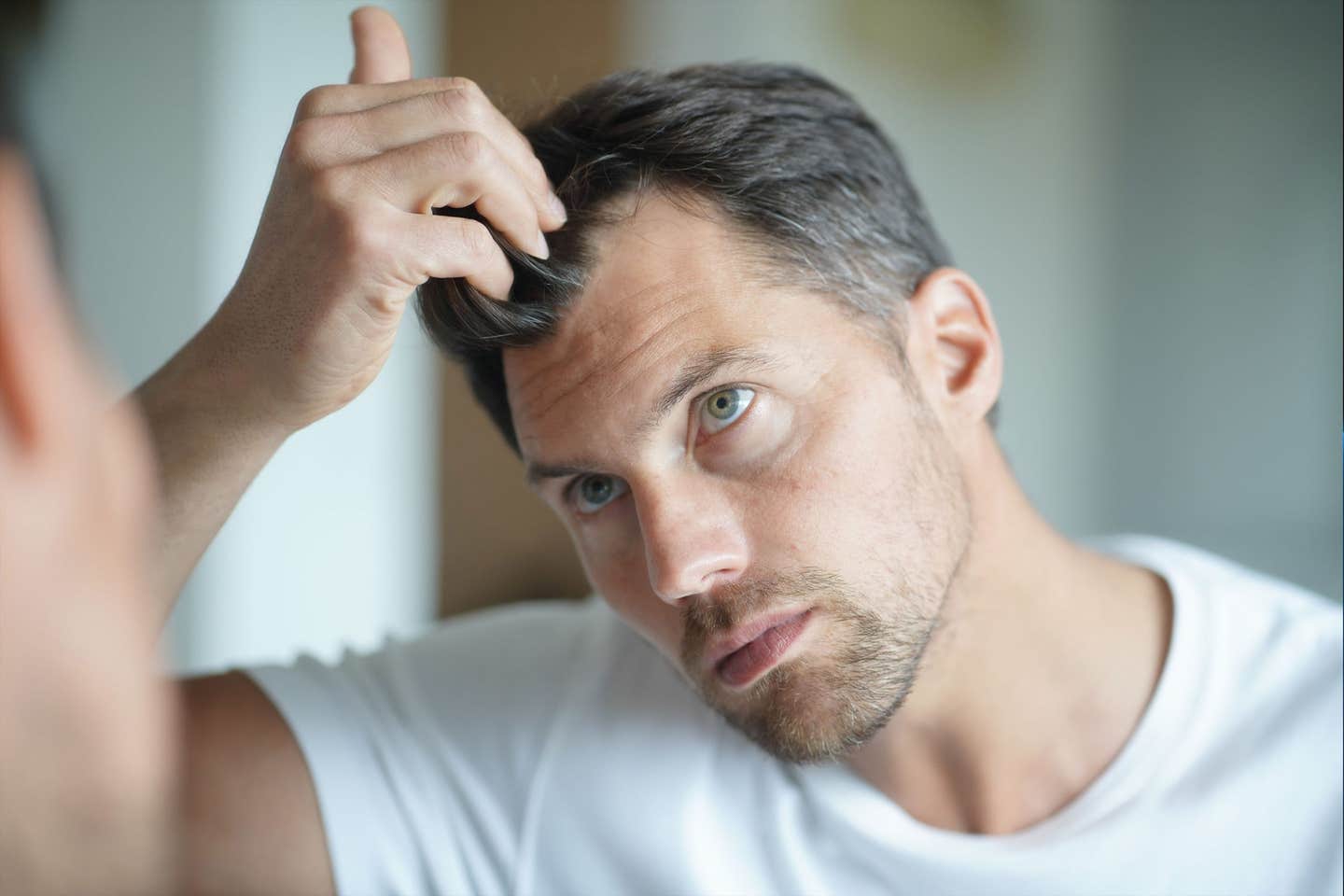Breakthrough new treatment can help millions recover their lost hair
For millions struggling with hair loss, available treatments like chemical and surgical solutions often fall short or outright fail.

Scientists have uncovered a tiny molecule with the potential to transform hair loss treatments. (CREDIT: CC BY-SA 4.0)
Scientists have uncovered a tiny molecule with the potential to transform hair loss treatments. Researchers at North Carolina State University have identified a microRNA, miR-218-5p, that plays a key role in hair follicle regeneration. By regulating a critical growth pathway, this molecule could open the door to more effective therapies.
For millions struggling with hair loss, available treatments often fall short. Surgical procedures can be invasive, while chemical solutions frequently fail to deliver lasting results.
Despite common belief, hair follicles don’t vanish in balding areas—they shrink. Scientists now believe that restoring dermal papilla (DP) cells in these areas could help hair follicles regain function.
A research team led by Ke Cheng at NC State set out to tackle this problem. They grew DP cells in two ways: a traditional 2D culture and a more advanced 3D spheroid model. Unlike flat cultures, the 3D spheroids better mimic the cells’ natural environment, potentially improving their regenerative abilities.
To test their approach, the team conducted an experiment using mice. They compared three treatments: 2D-cultured DP cells, 3D spheroid DP cells embedded in a keratin scaffold, and Minoxidil, a widely used commercial hair growth product.
The differences were striking. In just 20 days, mice treated with 3D spheroid DP cells had regrown 90% of their hair, reaching that milestone by day 15.
“The 3D cells in a keratin scaffold performed best,” Cheng said. “The spheroid mimics the hair microenvironment, and the keratin scaffold acts as an anchor, keeping the cells where they’re needed.”
Further analysis revealed why the 3D spheroid DP cells were so effective. They released exosomes rich in miR-218-5p, a microRNA that amplifies a crucial growth pathway for hair follicles. When levels of this molecule increased, hair follicles became more active. When it was blocked, hair growth slowed or stopped entirely.
Related Stories:
“Cell therapy with the 3D cells could be an effective treatment for baldness, but you have to grow, expand, preserve and inject those cells into the area,” Cheng said. “MiRNAs, on the other hand, can be utilized in small molecule-based drugs. So potentially you could create a cream or lotion that has a similar effect with many fewer problems. Future studies will focus on using just this miRNA to promote hair growth.”
The Emotional Impact of Hair Loss
Hair loss affects millions of people, causing both physical and psychological distress. It can result from genetics, hormonal changes, medications, or medical conditions, leading to insecurity and low self-esteem.
While treatments like minoxidil and finasteride can slow or halt hair loss, they do not always result in regrowth. Hair transplant surgery, though an option, is expensive and carries risks such as scarring and infection.
The potential impact of this research is significant. Hair loss can profoundly affect an individual's self-esteem and quality of life. Developing new and effective treatments can improve the lives of millions.
Identifying miR-218-5p as a candidate for drug development marks an important step forward. The next steps involve conducting further studies to determine the safety and efficacy of miR-218-5p-based treatments for hair loss. The hope is to create treatments that are less invasive and more effective than current options, offering new hope to those affected by hair loss.
The research by North Carolina State University on miR-218-5p opens new avenues for treating hair loss. By focusing on the molecular pathways involved in hair follicle regeneration, this study provides a promising outlook for developing non-invasive treatments that could significantly improve the quality of life for millions suffering from hair loss.
The research appears in Science Advances, and was supported by the National Institutes of Health and the American Heart Association. Cheng is corresponding author. Postdoctoral researcher Shiqi Hu is first author.
This work made use of instrumentation at AIF acquired with the support from the NSF (DMR-1726294). The AIF is a member of the North Carolina Research Triangle Nanotechnology Network (RTNN), a site within the National Nanotechnology Coordinated Infrastructure (NNCI).
Note: Materials provided above by The Brighter Side of News. Content may be edited for style and length.
Like these kind of feel good stories? Get The Brighter Side of News' newsletter.
Joseph Shavit
Head Science News Writer | Communicating Innovation & Discovery
Based in Los Angeles, Joseph Shavit is an accomplished science journalist, head science news writer and co-founder at The Brighter Side of News, where he translates cutting-edge discoveries into compelling stories for a broad audience. With a strong background spanning science, business, product management, media leadership, and entrepreneurship, Joseph brings a unique perspective to science communication. His expertise allows him to uncover the intersection of technological advancements and market potential, shedding light on how groundbreaking research evolves into transformative products and industries.



